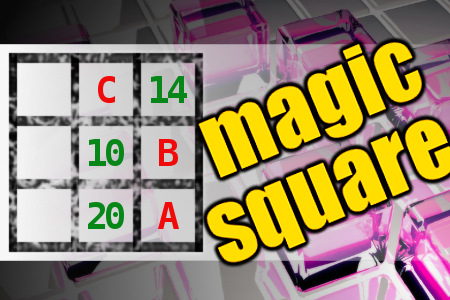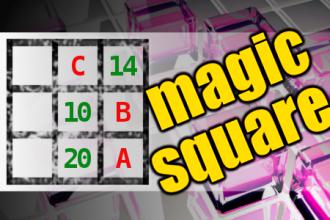MAGIC SQUARE: Calculate A-B-C
The aim is to place the some numbers from the list (4, 5, 6, 9, 10, 11, 14, 16, 17, 20) into the empty squares and squares marked with A, B an C. Sum of each row and column should be equal. All the numbers of the magic square must be different. Find values for A, B, and C. Solution is A-B-C.Correct answers: 24
The first user who solved this task is Nílton Corrêa De Sousa.
#brainteasers #math #magicsquare


